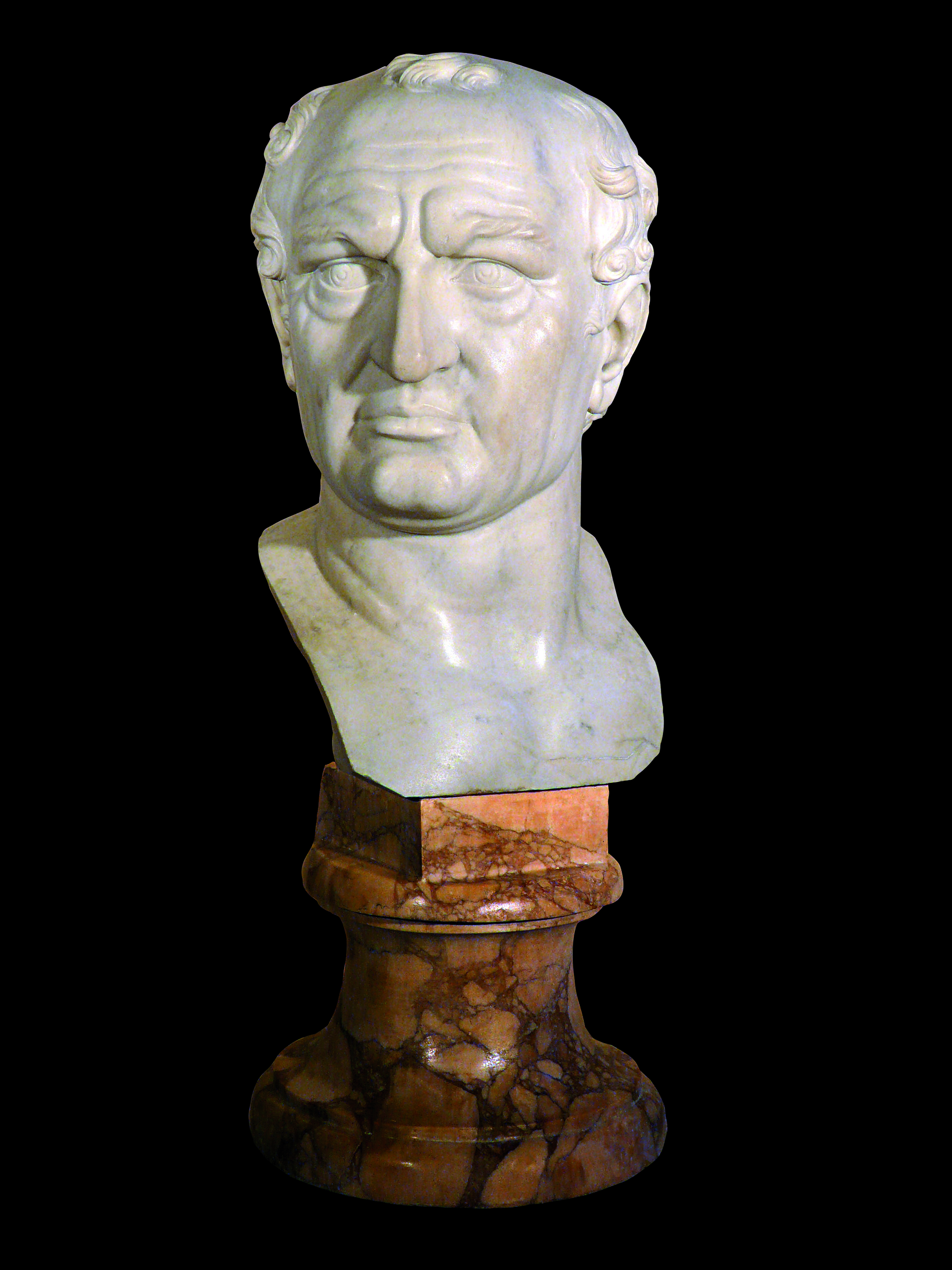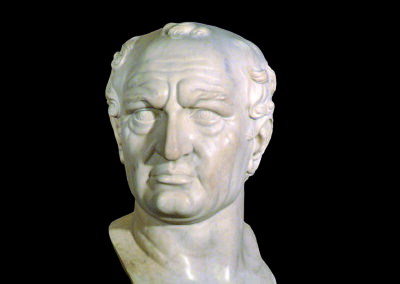Because of the wide dissemination and influence they enjoyed The Lives of the Twelve Caesars Suetonius, moralising biographies considered at the time as models, depending on the case, of exemplary sovereigns or abominable tyrants, numerous replicas of busts of the first twelve Roman emperors were made during the Renaissance. As an example of how famous these series of the twelve Caesars became, it is sufficient to recall that the royal collections, in the time of Philip II, a king who was not particularly inclined towards sculptural collecting, had up to five complete series and some other busts from another two incomplete series. The iconography of these twelve emperors was well known from Roman coins and, in the case of Vespasian, his characteristic physiognomy, with a frown, which, in the words of Suetonius, "reflecting a permanent effort"Markus Trunk, in his doctoral thesis, lists up to ten carved replicas of the emperor Vespasian from the mid-16th century onwards, the oldest of which is the one in the Farnese collection, now in the Naples Archaeological Museum.



